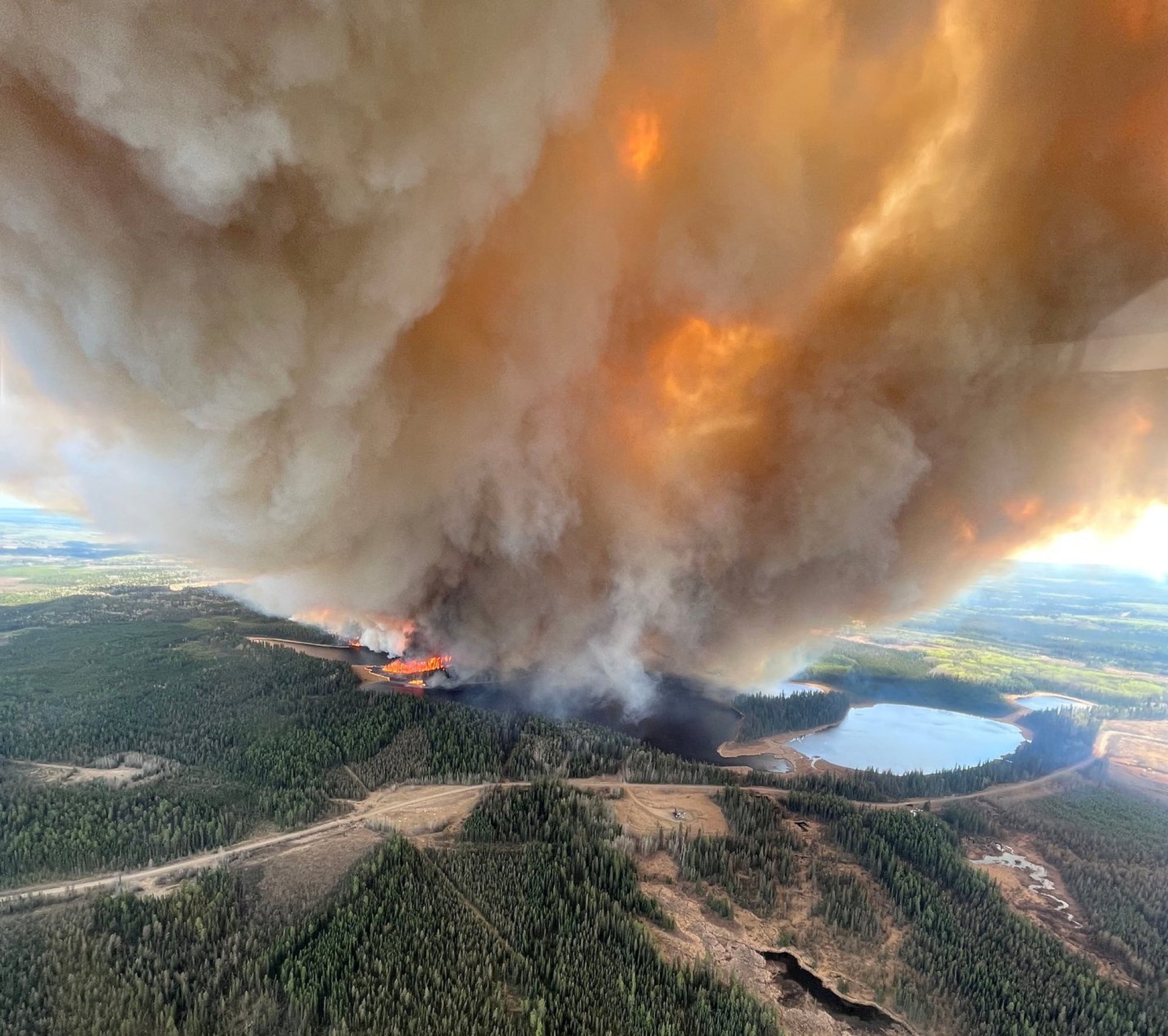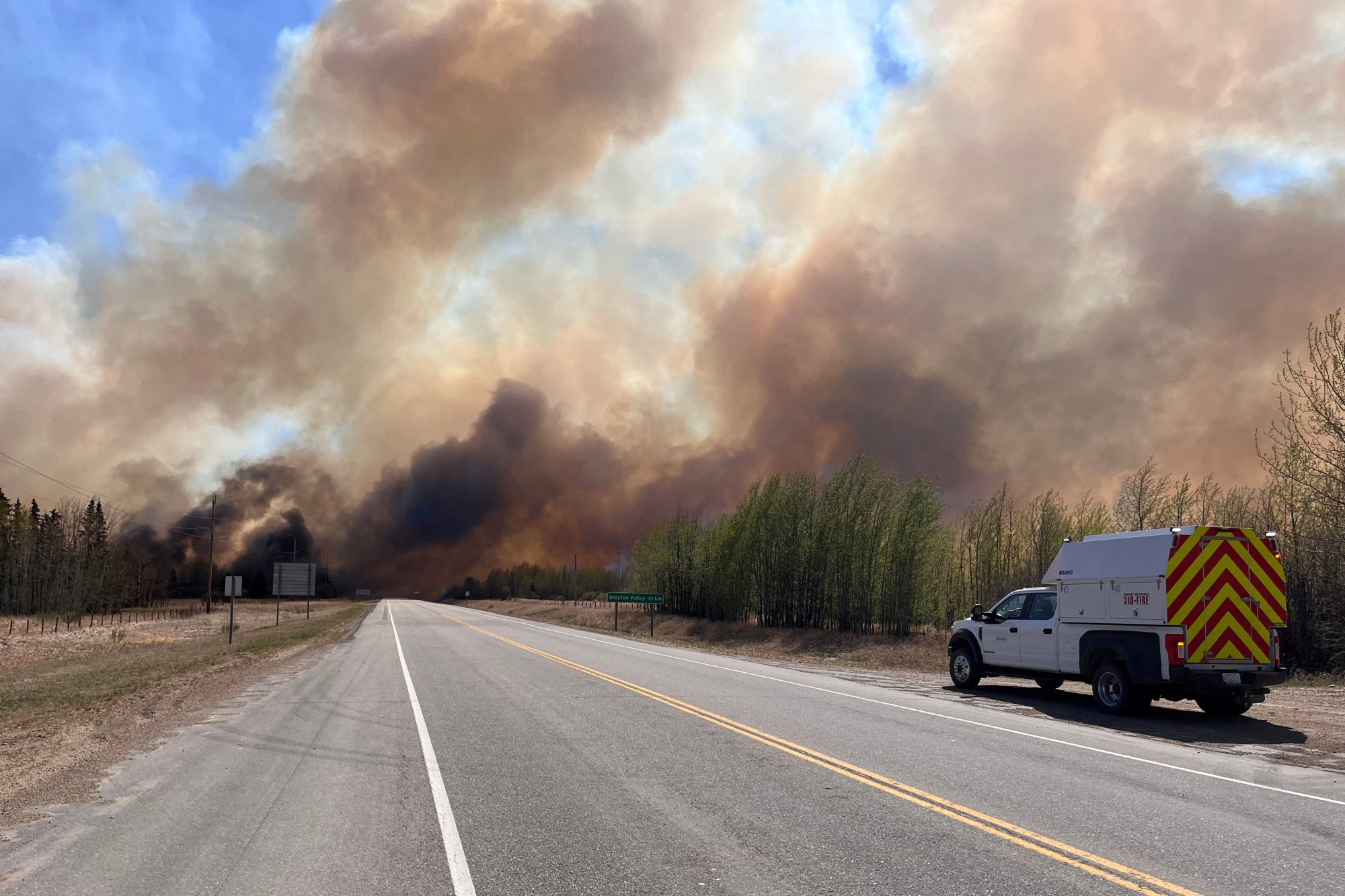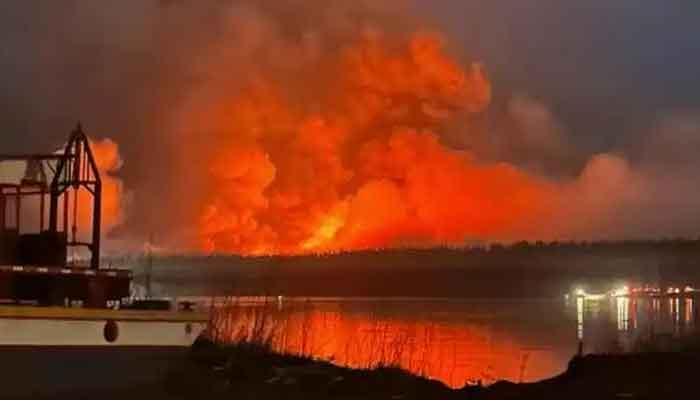- Alberta announced a state of emergency as wildfires flared across the Canadian province, forcing 25,000 people to flee their homes
- Thousands more have been told to be prepared to leave on a moment’s notice, as the number of fires – fanned by strong winds – jumped to 110

Alberta announced a state of emergency on Saturday as wildfires flared across the Canadian province, forcing 25,000 people to flee their homes in what a top official said was an “unprecedented” crisis.
Thousands more have been told to be prepared to leave on a moment’s notice, as the number of fires – fanned by strong winds – jumped to 110.
One-third of the blazes were listed as out of control.
“We’ve declared a provincial state of emergency to protect the safety, health and welfare of Albertans,” the province’s Premier Danielle Smith told a news conference after a meeting of her government’s emergency management committee.

A smoke column rises from a wildfire near Lodgepole, Alberta, Canada. Photo: Alberta Wildfire/Handout via Reuters
Earlier she said the province – one of the world’s largest oil-producing regions – “has been experiencing a hot, dry spring and with so much kindling, all it takes is a few sparks to ignite some truly frightening wildfires.”
“These conditions have resulted in the unprecedented situation our province is facing today,” she said.
According to Smith, more than 20 communities have been evacuated and at least 122,000 hectares (301,000 acres) have burned so far.
The state of emergency declaration gives the government of Alberta “greater powers to respond to extreme situations,” she said, including mobilising additional resources and unlocking emergency funds.
Almost all of Alberta – which is in the midst of an election – and much of neighbouring Saskatchewan province as well as a large swathe of the Northwest Territories face extreme fire risks, according to a federal government fire danger map.

A smoke column rises from a wildfire near Wildwood, Alberta, Canada. Alberta Wildfire/Handout via Reuters
Federal Emergency Preparedness Minister Bill Blair tweeted that Ottawa stood ready to provide federal help, if needed.
Oil sands facilities were closely monitoring the dangers, but none have reported production disruptions.
Drayton Valley with 7,000 residents – about 140 kilometres (85 miles) west of Edmonton – was among the communities evacuated as firefighters battled an out-of-control blaze.
Some 550 kilometres north of the provincial capital, a severe fire consumed 20 homes, a general store and a police station in the community of Fox Lake.

Residents were evacuated by boat and by helicopter.
In the town of Edson, which has a population of more than 8,000, residents have also been ordered to “evacuate immediately.”
In recent years, Western Canada has been hit repeatedly by extreme weather, the intensity and frequency of which have increased due to global warming.
Forest fires in Canada’s oil sands region in 2016 disrupted production and forced out 100,000 residents from Fort McMurray, pummelling the nation’s economy.
More recently in 2021, the westernmost British Columbia province suffered record-high temperatures over the summer that killed more than 500 people, as well as wildfires that destroyed an entire town.
That was followed by devastating floods and mudslides.
Source: scmp.com








